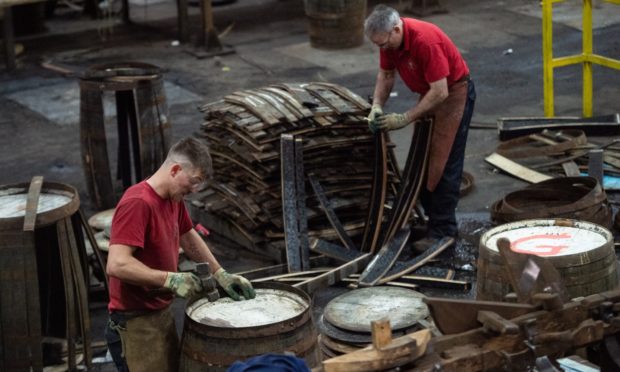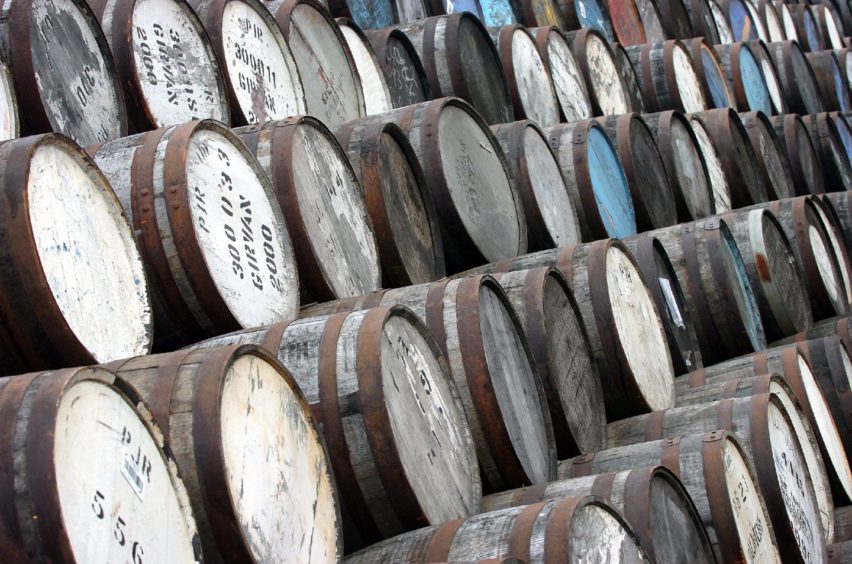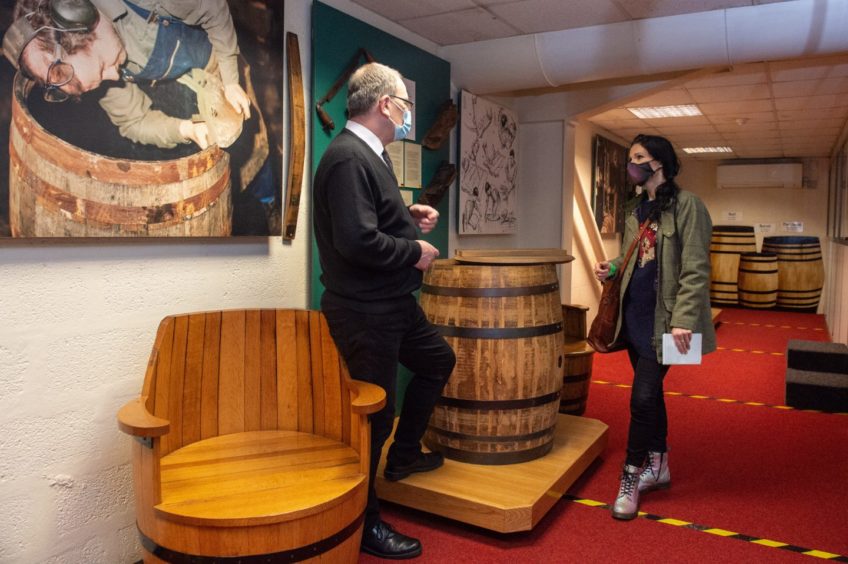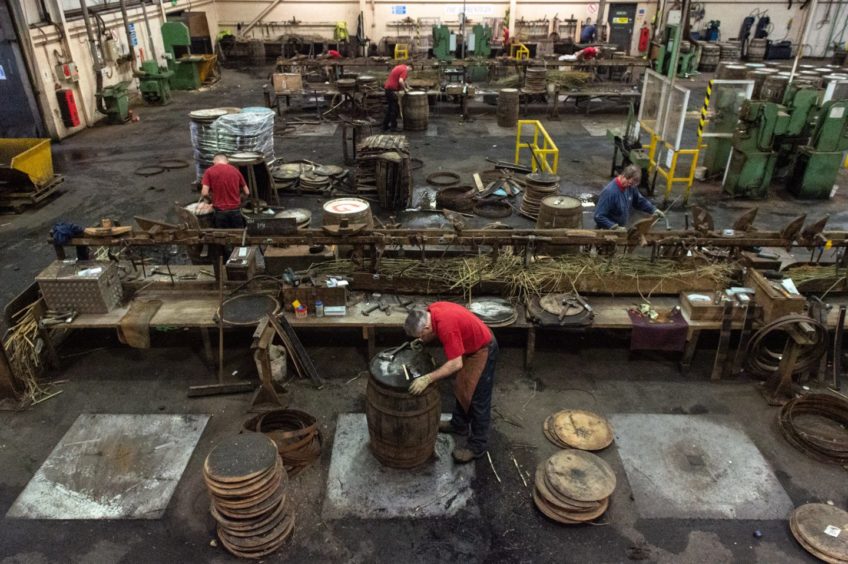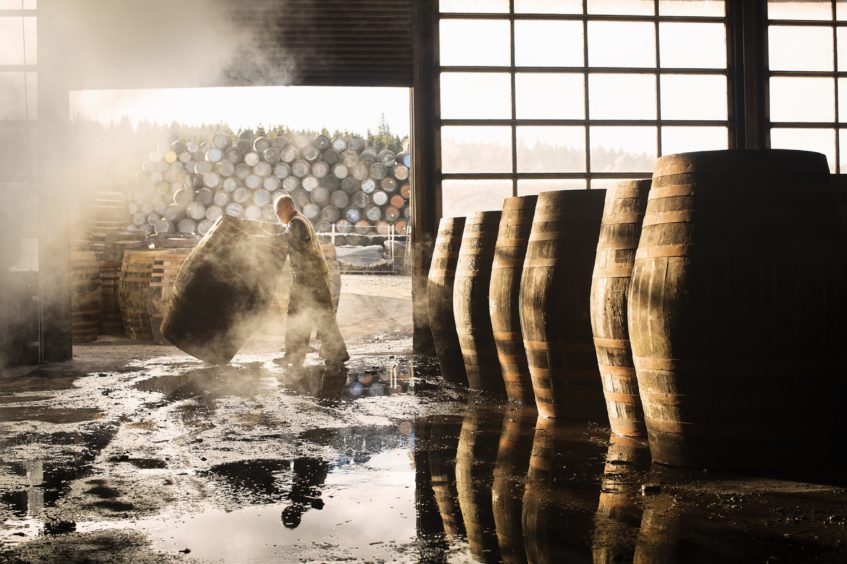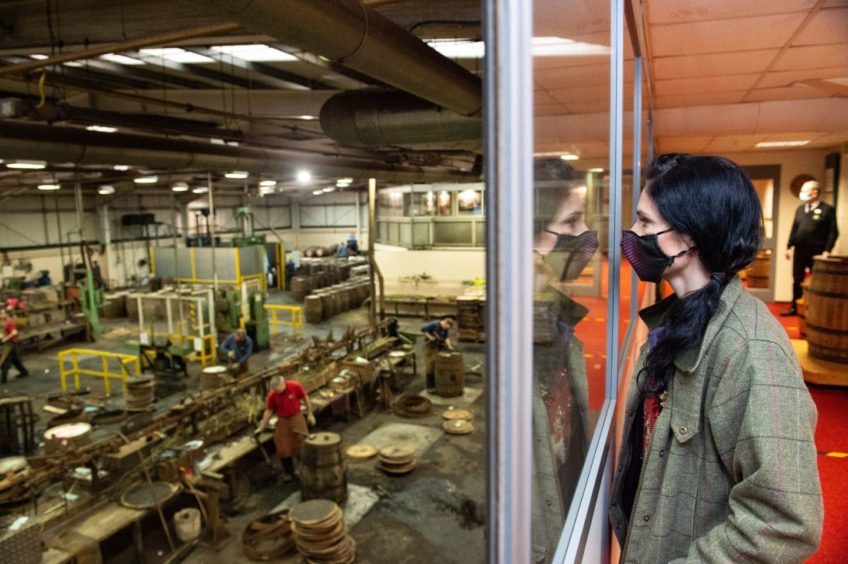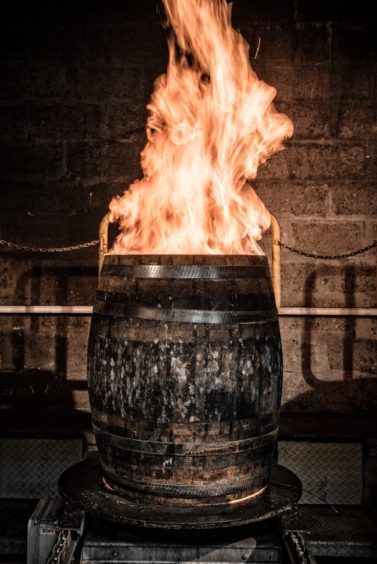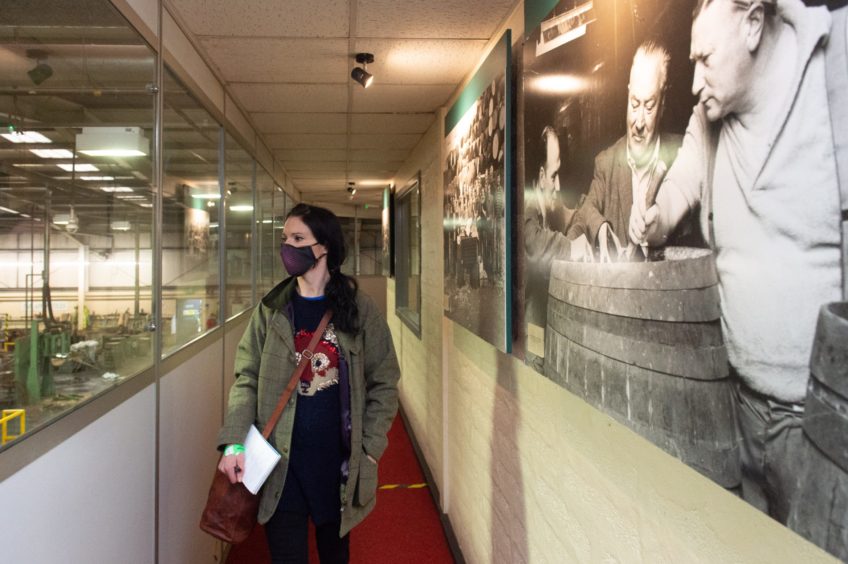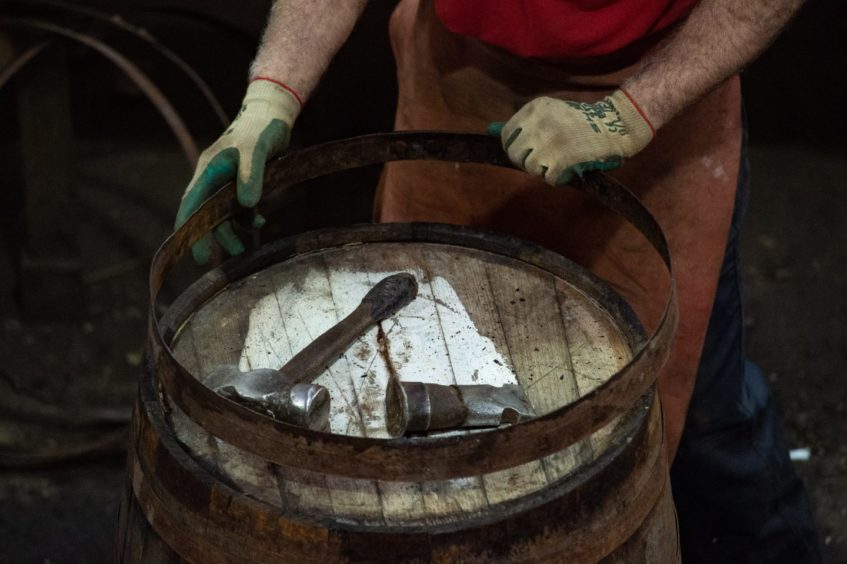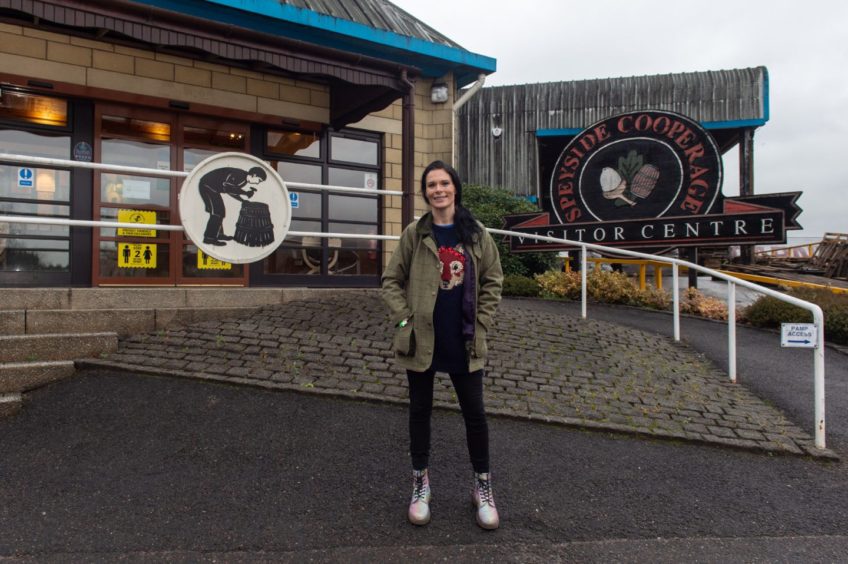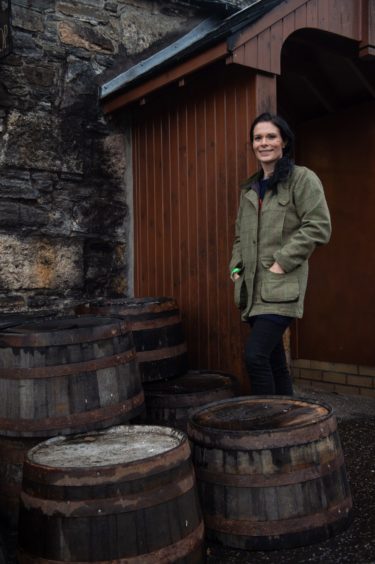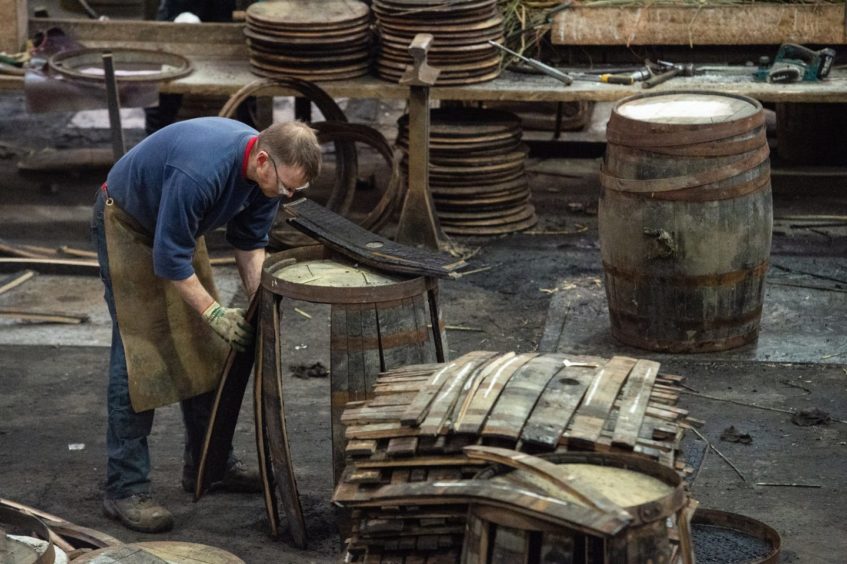Gayle discovers how the ancient art of coopering plays a vital role in the whisky industry when she visits Speyside Cooperage.
Giant pyramids of oak barrels dominate a patch of land on the outskirts of the tiny village of Craigellachie.
Stacked high, in seemingly endless rows, with the names of different distilleries stamped on the lids, it’s a visually dramatic sight.
Even dram aficionados might not realise it but Speyside Cooperage is at the epicentre of the whisky industry.
Each year the cooperage, which started life in 1947, makes and repairs more than 150,000 casks which are then shipped off to distilleries across the world.
There, they are filled with whisky and stored for a minimum of three years until the spirit matures.
It’s this resting period – which ex-cooper Ronnie Grant describes as a “deep, quiet sleep” – that gives the spirit its unique flavour and colour, whether pale yellow or deepest gold.
Ronnie, who now acts as the centre’s head tour guide, has worked in Speyside as a cooper for 45 years, following in the footsteps of his father.
“Coopering is a thriving industry,” he tells me.
“There’s no shortage of work to be done here. People will always want a wee dram and coopering is a big part of the process.”
The ancient craft of coopering has been passed down through the generations – Ronnie is a prime example – and the coopers still use traditional tools, whether bung hole borers, bick irons or belly knives.
It’s a full-on, hands-on working environment with coopers paid per cask, working on up to 30 a day.
It’s a mesmerising process – a true feast for all the senses.
I take great joy in peering down on a band of swarthy men hard at work from the comfort of the visitor centre’s gallery.
There’s a heck of a lot of noise as they hammer, roll, cut and manoeuvre pieces of wood and strips of water reed into place.
If it’s a repair job, the cooper kicks off by taking the cask apart, removing the lid, metal hoops and then inspecting the wooden “staves”.
It’s hot, sweaty work, often made hotter by the steaming and “firing” processes which char the inside of the cask.
The oak that comes to the cooperage hails largely from the US and Spain and it’s the only wood that’s leak-proof and allows the precious contents to breathe without spoiling the flavour.
There’s real history and heritage here, too, with some casks starting life more than
100 years ago as American white oak trees.
These are cut down into “staves” and air-dried in Kentucky before being shipped to Craigellachie.
Here, they are assembled into casks, secured with metal hoops, steamed and “toasted” over an open fire.
This softens and caramelises the wood, opens up the grain and releases wonderful flavours which influence the taste of whisky.
The cask is then filled with spirit and the two rest together for at least three years.
When the spirit is eventually poured from the cask, it retains a memory of the oak barrel.
“A cask can last up to 50 or even 60 years, enjoying three or four fills,” Ronnie tells me.
“If it’s repaired and rejuvenated, it can have a few more fills.
“Once its life is over in the world of whisky, it can be recycled and used as a garden planter or whatever you want.”
The cooperage’s general manager Andrew Russell isn’t surprised when I tell him I had little idea about the vital role coopering plays in the whisky industry.
“A lot of people don’t realise the importance of the cask in the whisky-making process and it’s great to be able to tell them our story,” he beams.
“From our point of view, the cask is one of the most important things in the process.
“A cask provides 70% or more of the colour and flavour to a spirit.
“The cooperage is concerned with the supply, repair and rejuvenation of casks for primarily the whisky industry but also beer and cider.”
While most of the wood Speyside Cooperage transforms into casks is imported, some casks are made from Scottish oak.
“We manufacture 2,500 to 3,000 casks here a year,” says Andrew.
“A small percentage of those are made from Scottish oak, something we just started doing in 2020.
“We’re all about sustainability. We work with the Association of Scottish Hardwood Sawmillers and Trees for Life to replant any trees cut down.
“It’s exciting but it will never be a big industry as there aren’t many oak trees in Scotland.”
In 1980 there were more than 1,000 coopers employed in Scotland. Today, there are around 200, thanks to modern machinery.
But there’s no doubt it’s skilled tradesmen who are responsible for keeping the ancient art of coopering alive.
While everyone talks about the importance of distillers, coopers are the most underrated people in the whisky industry.
In the words of one of the cooperage’s foremen: “Nae coopers, nae whisky!”
Bear that in mind the next time you enjoy a wee dram. Slainte!
Info
Speyside Cooperage visitor centre takes you on a journey through the lifecycle of oak casks via an exhibition, tour and 4D audio visual presentation.
Tours must be booked in advance, and strict Covid-19 measures are in place.
The site also boasts a cafe and gift shop.
It’s part of the famous Speyside Malt Whisky Trail which boasts eight distilleries and the cooperage. speysidecooperage.co.uk
